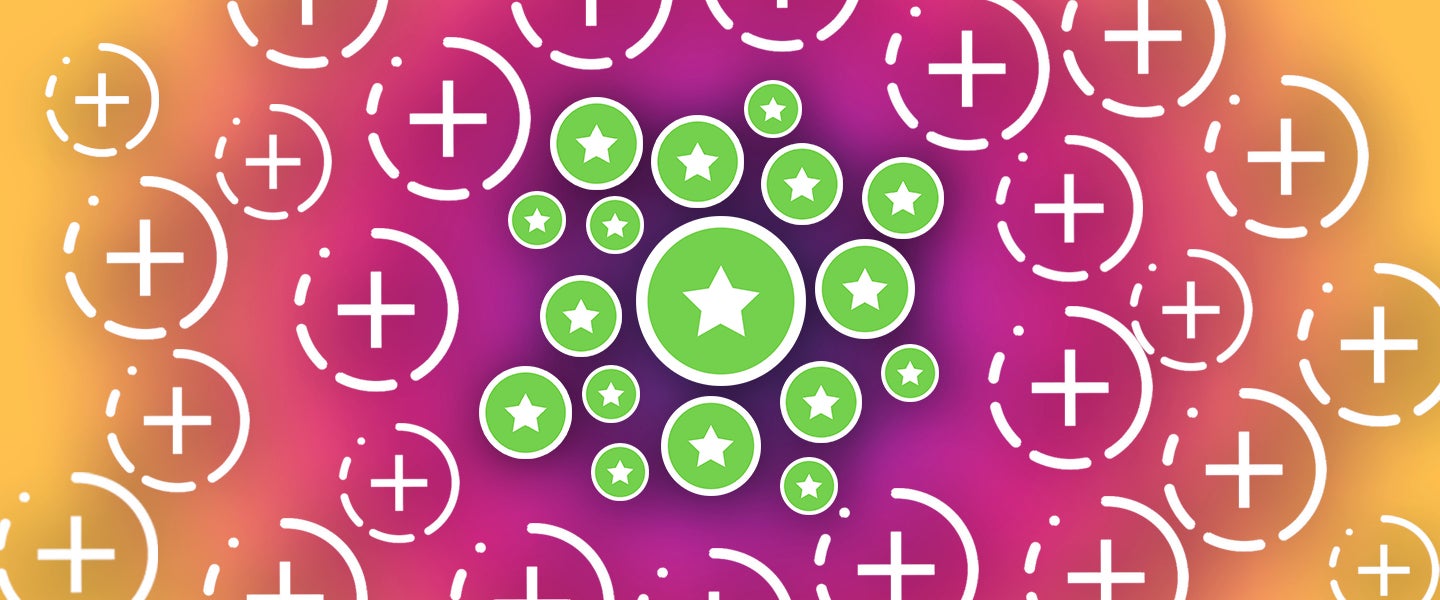Unexpected texts from exes? Gross late-night food? Peace-sign hands and duck-lipped selfies with mascara strewn down our cheeks from crying? Ironic Minion memes? Footage of your best friend passed out on the bathroom floor? Perfect. The Close Friends Instagram Story welcomes your worst.
Instagram’s new feature, a Story feed for a select few only, is the perfect repository for the photos worthy of sharing but not polished (or appropriate) enough for the grid. It’s for the people in your life who you know won’t judge you or consider any social media content in your next performance review. The Close Friends feature functions however you’d like it to. Unlike your regular story, which is visible to anyone, it’s up to you who makes the Close Friends cut.
Over the past few years, Instagram has taken Facebook’s place as the digital Rolodex of everyone we’ve ever met, strangers we’d like to stalk and friends of friends we’ve never actually met. Because of that, some of us may define “Close Friends” quite liberally.
Instagram’s close friends and snapchat private stories aren’t actually for the close ones, they’re for the non-judgemental ones
— عاشه (@aishaaalmuftah) July 16, 2019
any time I drink I have to check the next morning that I didn’t just add everyone I’ve ever met in person to my close friends list on Instagram
— eden "tasteful yet erotic" rohatensky (@edenthecat) July 19, 2019
“I put everyone I follow on my Close Friends list — except parents and teachers,” says Bobby, an incoming freshman at the University of Texas. “Some of my teachers were kinda cool, but not, like, cool where I’d add them to my Close Friends list.”
Malcolm Wells, a 23-year-old in St. Petersburg, Florida, handles his list similarly. “Life hack: Put everyone on the list. That way everyone thinks they’re a close friend,” he says. “I’d be pissed if I found out someone I considered a close friend didn’t add me to their Close Friends list. Friends in real life means friends on social media.”
For others, though, Close Friends means something a little more… intimate.
shocking that Instagram hasn't renamed the "Close Friends" functionality to "This gay user wants to have sex with you"
— Haüs of Gourdeau (@la_gourde) July 17, 2019
gonna start posting my nudes to my close friends list on Instagram because what else am I suppose to do with them
— Raquel Inacio fan account (@Raquelinacioo) July 16, 2019
“I only have four people on my Close Friends list,” says Jasmine, a 25-year-old in Georgia. “It’s basically just friends I’m attracted to and comfortable having a flirtatious/sexual conversation with. I just recently started using the feature, so it might be a bigger list eventually.”
Kristy, a 25-year-old from Florida, similarly classifies her Close Friends list as “people who can see my hoe posts.” She uses it after coming home from a booty call, sharing selfies and updates on how the date went, as well as updates on her mental health or rants about things going on in her life. Still, despite the confessional nature of her posts, she feels comfortable adding people to the list whom she doesn’t define as an actual close friend.
Similarly, Sabrina, a 23-year-old from California, uses Close Friends to showcase a side of her that no one else sees in her day-to-day life. Her Close Friends posts are often party- or drug-related, and she’ll post semi-nudes, too. That said, her list changes. “Sometimes I put just one person on my Close Friends list just so I can tease ’em,” she says.
yeah sex is cool but have u ever logged on to instagram to see that a woman you don’t know well but really admire has added you to their close friends group?
— M (@maljane) July 22, 2019
Because of the familiarity the label would seem to suggest, some find it odd to end up on somebody’s list if they aren’t truly close friends. In an unscientific survey I put on my Instagram, 34 percent of respondents agreed: Weird! Regardless of the content they’re posting, some see the feature as exclusively for their “day-ones” or “people [they] trust,” as some respondents told me.
Therapist: and what do we do when we feel like this?
Me: we post an three page long rant on our instagram close friends list
Therapist: …no
— toby ? (@tobs_mo) July 24, 2019
I personally find it delightful to discover I’m on someone’s Close Friends list, though I myself use the tool conservatively. My best Close Friends content is probably a video of my boyfriend vacuuming around me while I lay on the couch — a lighthearted but intimate moment, one I figured only people who knew us both would appreciate. But the optics of the situation were too open to interpretation for my comfort to share with my larger Instagram following. For instance: Did it look like he was a stereotypical “whipped” boyfriend? Did it seem like I was praising him for doing the bare minimum of household labor? Maybe I was overthinking it, but it was too stressful to post “on main.” The clip simply revealed a part of my life I didn’t want the world to see.
A photo of my whole ass, though? That’s going on the grid, baby.

